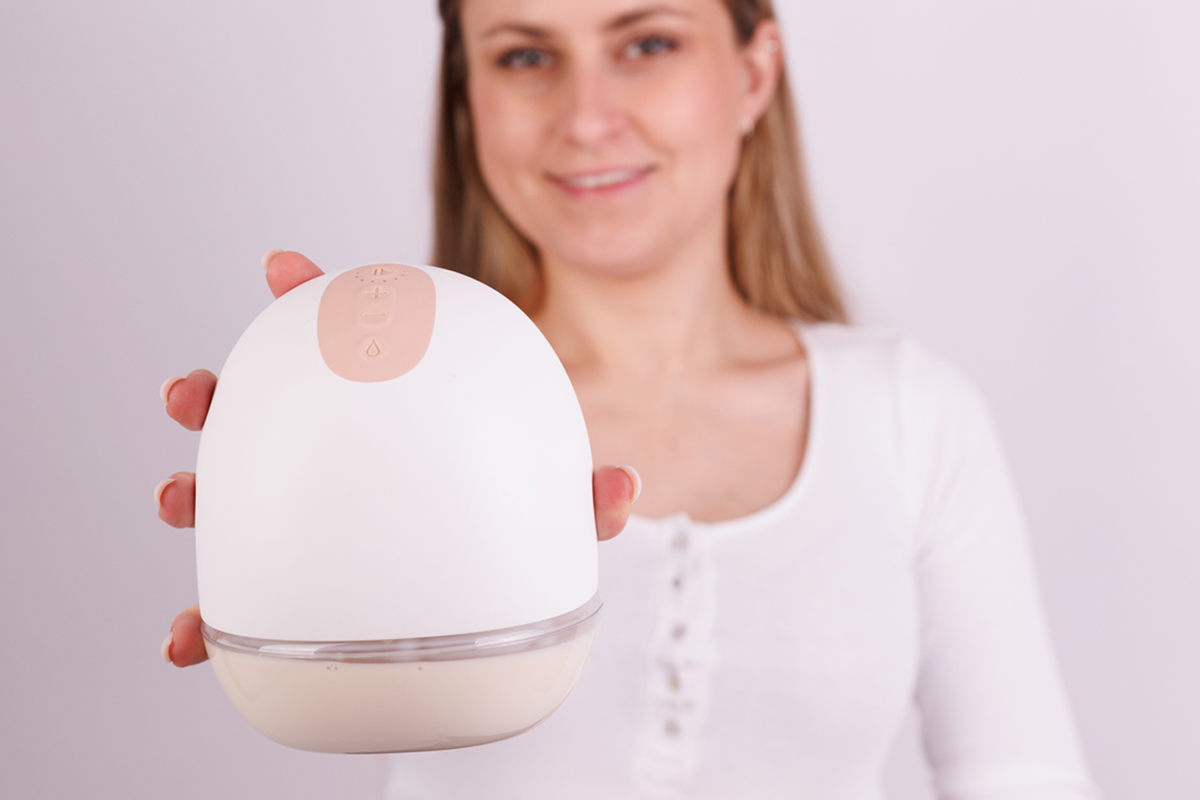Considering pumping or expressing your milk before your little bundle of joy arrives? Many wonder if this practice could help induce labor or build a stash of that precious liquid gold, colostrum. However, it's essential to pause and consider the safety and timing of this approach. Worry not, we've got you covered with all the information you need to make an informed decision about pumping before birth – one that aligns with your and your baby's well-being. Let's explore this topic together, so you can embark on this journey with confidence and preparedness.
What is the antenatal expression of colostrum?
Prenatal expression, also known as colostrum harvesting, is the practice of expressing and collecting small amounts of colostrum (the first milk) during late pregnancy. This technique allows expectant parents to prepare for breastfeeding and have a supply of nutrient-rich colostrum ready for their newborn. Saving this colostrum may also be beneficial if your baby is likely to need special care after birth
💡 By understanding and practicing prenatal expression, you're taking proactive steps to prepare for your breastfeeding journey.
Consult your healthcare provider before starting, as prenatal expression is generally only recommended after 37 weeks of pregnancy (1), when the risk of preterm labor has passed.
When should you start pumping before birth?
Understanding the timing
Typically, it's not recommended to start pumping or hand express milk before birth unless advised by a healthcare professional. During pregnancy it can stimulate hormones that may induce labor prematurely. Most people wait until after delivery to begin.
Exceptions for early expressing
In some cases, healthcare providers may recommend expressing milk before birth:
- If you have a planned caesarean or induced birth: your milk will be available if you and your baby are separated
- To collect colostrum if supplementation might be needed after delivery : this will be especially useful if your baby will be born early
- If you are expecting a baby with a cleft lip or palate
- if you have diabetes : babies of diabetic mothers risk developing low blood glucose level. In this case your baby will need colostrum to maintain his blood glucose level
- If you have breast abnormalities or have had breast surgery : storing colostrum can be helpful if you have problem establishing milk production
What are the benefits of expressing colostrum and/or pumping before birth?
Hormonal boost
Pumping before birth can help kickstart your milk production.
Using a breast pump may increase oxytocin levels (2), which can relax your body and potentially start uterine contractions. This hormonal boost can also encourage early milk production, giving you a head start on breastfeeding.
You can also use hand expression, it may be the best option if you want to collect the colostrum, as it is coming in small amounts.
Building confidence and preparedness
Prenatal hand expression or pumping can help you feel more prepared and confident for breastfeeding. Familiarizing yourself with the process and seeing even small amounts of colostrum can be reassuring, especially for first-time parents.
Collecting colostrum for special circumstances
For those with certain risk factors like diabetes, collecting colostrum before birth can ensure you have some on hand after delivery. This "liquid gold" is packed with nutrients and antibodies to protect your baby's health from day one.
Potential labor induction
While research is limited, some studies suggest that pumping before birth may be effective in inducing labor for full-term pregnancies by increasing the levels of oxytocin hormone in the body. It helps start uterine contractions. It's crucial to discuss this with your healthcare provider before attempting any labor induction methods.
Risks and considerations of pumping before birth
Safety precautions
If you decide to try pumping before birth, take care to follow safety guidelines. Use a gentle setting on your pump, only express for a few minutes each day, and limit sessions to 5-10 minutes. The wireless breast pump Perifit Pump offers customizable rhythms to ensure comfort.
💡 Check with your doctor or midwife if you are at risk for early labour and stop immediately if you feel any uterus cramp.
Use the right flanges
Breast pump flanges come in different sizes. The funnel-shaped piece that touched your breast is usually called a flange. Use a flange size chart to make sure you got the right size. If pumping is comfortable with good milk flow, you probably have a good fit.
Pumping should not be painful, if it is you may need a bigger or smaller size. Sometimes a different flange size is needed for each breast.
How to safely express your milk before giving birth?
Timing and frequency
If approved by your doctor, aim to start expression and/or pumping around 4-5 weeks before your due date. Begin with 2-3 short sessions daily, lasting about 5 minutes each. This helps stimulate milk production without overstressing your body.
Hand expression
Hand expression is a useful technique to learn. It is effective, convenient and free. You can also use both hand expression and pumping. A pump allows you to start gently and gradually increase intensity as needed to effectively express colostrum while minimizing discomfort or risk of contractions. Be sure to follow all safety instructions and keep the breast pump parts meticulously clean.
In essence, that's the scoop on expressing milk before giving birth. Whether your aim is to jumpstart labor with pumping or stockpile a supply of liquid gold with hand expression, keep in mind that every pregnancy journey is unique. Listen to your intuition, but don't hesitate to consult your healthcare provider for personalized guidance tailored to your circumstances. They're your best resource for advice specific to your situation. And if you decide to try expressing milk before birth, you'll be joining a community of parents who have been there before. Parenthood is an incredible adventure, and you're already off to a great start by doing your research. Embrace that pregnancy glow and get ready for the journey of a lifetime!
Sources:




